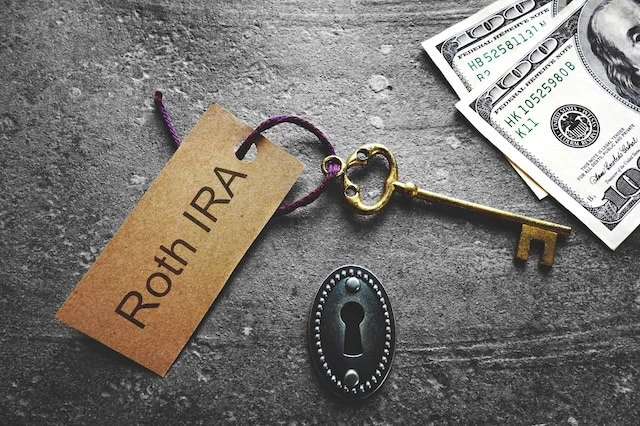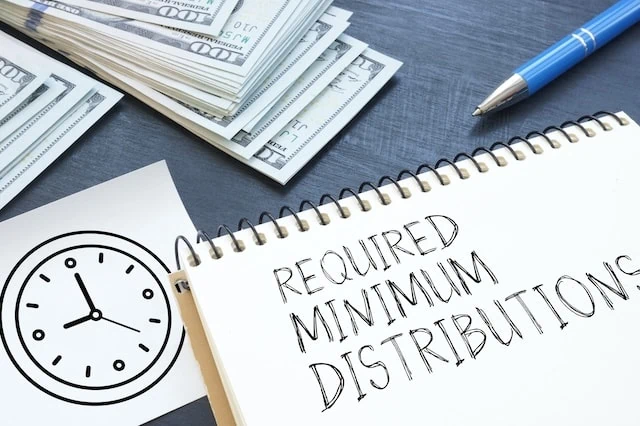During your working years, the size and your frequency of your paychecks is largely determined by your employer. But once you hit retirement, the responsibility of paying you falls to … well, you.
Some people might rejoice at the freedom of paying themselves from their retirement accounts as they see fit. Others might find yet another post-work financial decision daunting. Either way, this power will fall into your hands—which is why you not only need a retirement budget, but a retirement withdrawal strategy.
However, even if you have a solid budget and a smart withdrawal strategy in hand, you have to stay vigilant. Because making withdrawal mistakes can quickly deplete even the most ample of nest eggs.
Today, I want to discuss some of the most common errors that retirees (and even not-yet-retirees) make in withdrawing from their retirement accounts. These unnecessary failures routinely cost Americans thousands of dollars lost to taxes, penalties, and opportunity cost.
Featured Financial Products
How NOT to Withdraw From Retirement Accounts

You spent your entire working life building up your retirement nest egg. The hardest work—saving up enough money—is done.
Unfortunately, if you don’t withdraw your funds strategically throughout your retirement, all your hard work might be for naught, as your savings might not last as long as you expected.
Which accounts to draw from first, when to take withdrawals, and how much you should take out are vital questions every soon-to-be retiree needs to ask themselves as they near the end of their career.
Don’t make the following mistakes with your retirement account withdrawals.
Mistake #1: Withdrawing From Tax-Advantaged Accounts Before Taxable Accounts

Do you have both a tax-advantaged retirement account such as a 401(k) or IRA, and a taxable brokerage account? Typically, it makes more sense to withdraw from the taxable account before you touch your traditional or Roth retirement accounts.
Why? It’s all about taxes. You want to give money in a tax-deferred or tax-exempt account as much time as possible to grow to maximize that benefit. The longer you can wait to withdraw from these tax-advantaged accounts (without sacrificing your quality of life, of course), the better.
There is one exception: If you have short-term investments (held for one year or less) within a taxable brokerage account that have appreciated in value, it might behoove you to wait a little longer to sell. That’s because if you wait to sell an investment until you’ve held it longer for a year, and you sell for a profit, that profit will be taxed at more favorable long-term capital gains tax rates.
Do you want to get serious about saving and planning for retirement? Sign up for Retire With Riley, Young and the Invested’s free retirement planning newsletter.
Related: What to Do With Your 401(k) When You Retire
Mistake #2: Withdrawing from Roth Accounts Before Tax-Deferred Accounts

In retirement, there’s a generally preferred order of operations as it pertains to withdrawing from your accounts. Above, I noted that you’ll want to withdraw from taxable accounts before tax-advantaged accounts. You’ll also want to make sure that within the category of tax-advantaged accounts, you should withdraw from tax-deferred accounts (401(k)s, IRAs, etc.) before tax-exempt accounts (Roth 401(k)s, Roth IRAs, etc.)
In addition to the original account owner benefiting from tax-free growth and withdrawals, it’s also advantageous for your beneficiary, if you have one.
If you pass away, your beneficiary will inherit your accounts. If they inherit your Roth IRA, they would be able to withdraw both your contributions and earnings tax-free (assuming the account is at least five years old at the time of withdrawal).
Related: Are You Saving Enough for Retirement?
Mistake #3: Forgetting About Retirement Accounts

Thirty or forty years ago, you started your first job, and it offered a 401(k) account. You contributed a small amount of each paycheck to it but otherwise ignored the account. A few years later, you switched jobs and found a new employer.
You had several options—you could have transferred your old 401(k) money into a new 401(k), rolled over the old 401(k) into an IRA, or even liquidated the funds and taken the tax hit—but you forgot about the 401(k) completely and just kept the money in that old account.
Sound unlikely that you could forget about money you stashed away somewhere? Well, it’s surprisingly common. Capitalize estimates that, as of May 2023, there were 29.2 million forgotten or left-behind 401(k) accounts. The average balance in one of these forgotten accounts? $56,616!
Even if you don’t put much money into your first 401(k), that money has decades to compound into a significant sum. So be sure to carefully keep track of any and all workplace plans you ever contribute to.
Related: How to Invest for (And in) Retirement: Strategies + Investment Options
Mistake #4: Taking Early Withdrawals From a Retirement Account

For any number of reasons, you might be tempted to make an early withdrawal from one or more of your retirement accounts. And hey—if you’ve accumulated a substantial amount, what’s the harm in taking a little out early? It’s your money, after all.
Well, there’s quite a bit of harm, actually.
When you withdraw early from a tax-advantaged retirement account, you’re compounding a problem by both missing out on potential growth from the withdrawn money, and eating penalties as well.
For instance, if you withdraw funds from a traditional IRA or 401(k) account before reaching age 59½, you’ll not only have to pay taxes at your ordinary rates, but you’ll also be subject to an additional 10% early withdrawal tax. There are a few exceptions to this penalty—which cover spending situations such as buying your first home or sustaining losses because of a federally declared natural disaster—but they have strict rules and dollar limits.
Early withdrawal rules for Roth accounts work a bit differently because they’re funded with after-tax dollars. If you have a Roth IRA, you can withdraw contributions that you made to the account without having to pay any taxes or penalties. However, if you withdraw earnings on those contributions before age 59½, and before the account is at least five years old, you will be subject to both taxes and a 10% early withdrawal penalty. (Again, some exceptions apply for the penalty, but you still might need to pay taxes.)
Early withdrawals are a particularly damaging mistake for would-be early retirees. If you plan on retiring early, make sure you will have enough money outside of tax-advantaged retirement accounts to last you until you’re old enough to withdraw without penalty.
Featured Financial Products
Mistake #5: Not Taking Required Minimum Distributions

On the flip side of the coin, there are times where you absolutely have to take withdrawals from certain retirement accounts, even if you don’t need those funds to be liquid.
Required minimum distributions (RMDs) are the minimum amounts people are required to withdraw from certain retirement accounts every year after they reach a set age. Designated Roth accounts are no longer subject to RMD rules while the account owner is alive, but other types of retirement accounts still have RMDs.
The Secure 2.0 Act increased the age account owners have to start taking RMDs. Now, individuals must take withdrawals from traditional, SEP, or SIMPLE IRAs every year once they reach age 73, even if a person is still employed. The RMD rules also apply to employer-sponsored retirement plans—such as 401(k)s, 403(b)s, 457(b)s, and profit-sharing plans—but participants may delay RMDs until they stop working.
If you don’t take an RMD by the due date, you’re subject to a hefty excise tax equal to 25% of the amount not withdrawn. The tax rate is reduced to 10% if the error is fixed within two years, but that’s still a big unforced error.
Don’t skip your RMDs.
Related: 10 Frugal Habits That Make Retirees’ Lives Better
Mistake #6: Not Considering a Roth Conversion

A Roth conversion lets you move money from a traditional retirement account to a Roth account. You pay taxes when you convert the funds, but then the money grows tax free. This money move comes with several advantages:
- It locks in your tax rate.
- It diversifies your tax treatment.
- The account is never subject to RMDs while you’re alive.
But there are drawbacks too. You’ll likely have a massive tax bill in the year you execute the conversion. You also can’t withdraw converted contributions or earnings for five years, which could be tricky if you’re on the brink of retirement. And the conversion can’t be undone if you change your mind later either.
While you ultimately might or might not decide to do a Roth conversion, it would be a mistake to not consider one.
Related: What Is a Backdoor Roth Conversion? [Retirement Strategy for High-Earners]
Mistake #7: Withdrawing Too Much or Little Each Year

You want to withdraw enough money each year to live comfortably. At the same time, you don’t want to withdraw too much and risk outliving your savings.
There is no one-size-fits-all suggestion for navigating this issue. Everyone’s financial situation is different, and as a result, everyone’s retirement withdrawal strategies differ from person to person, too. If you’re married and have a long life expectancy, your strategy probably won’t look the same as a single person with a short life expectancy. Someone with a pension and a well-funded Roth IRA isn’t in the same boat as a person whose retirement is highly dependent on a modestly funded 401(k).
Consider talking to a financial advisor about what withdrawal rate makes sense for you. Keep in mind that based on inflation, market conditions, and your personal financial situation, your withdrawal strategy might need to evolve over time.
Also, while you should have a withdrawal plan in place, you should also be willing to be flexible.
Do you want to get serious about saving and planning for retirement? Sign up for Retire With Riley, Young and the Invested’s free retirement planning newsletter.







![Should You Max Out Your 401(k) Each Year? [Yes...and No] 20 should you max out your 401k each year or invest elsewhere](https://youngandtheinvested.com/wp-content/uploads/should-you-max-out-your-401k-each-year-or-invest-elsewhere-600x403.webp)
